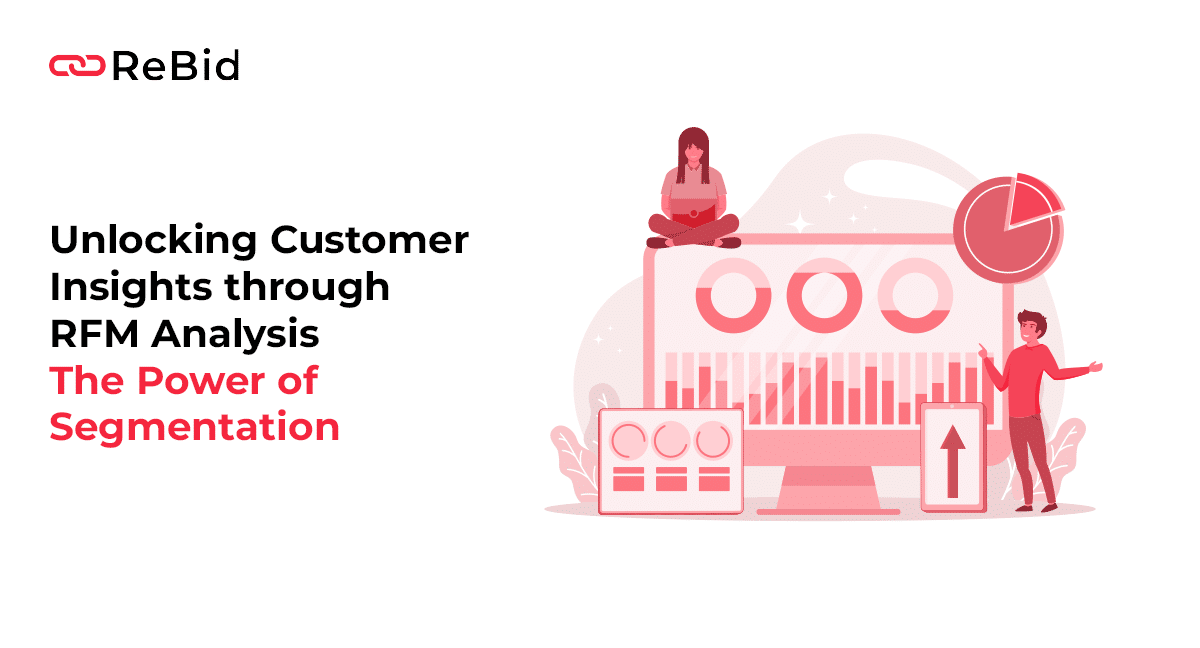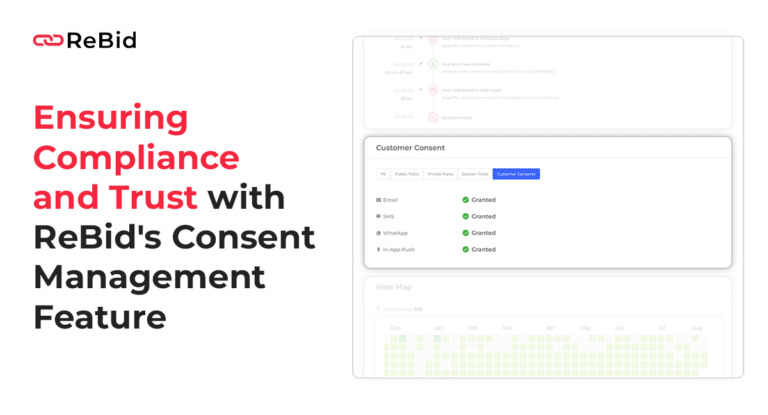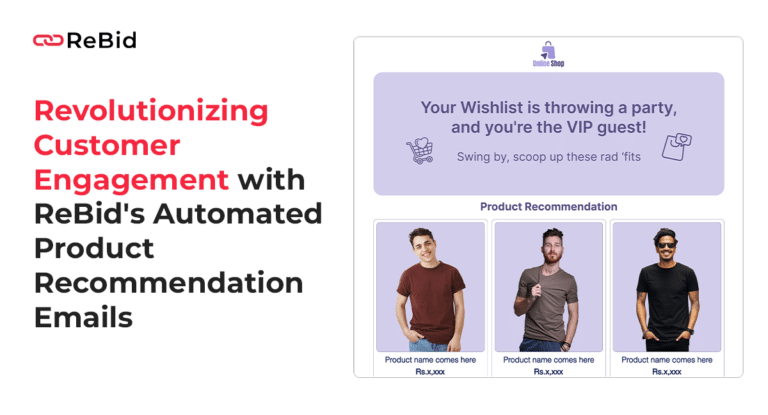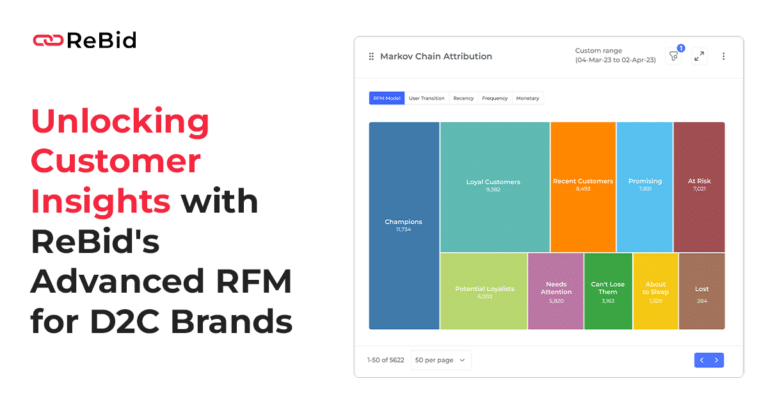RFM analysis is a valuable tool that savvy marketers use to comprehend the significance of understanding their customers thoroughly. By focusing on Recency, Frequency, and Monetary value, marketers can identify their most valuable customers based on their recent purchase history, how often they make purchases, and the amount they spend. This approach helps marketers prioritize customer retention, loyalty, and building strong relationships with customers, rather than solely concentrating on driving more clicks. With RFM analysis, marketers can develop targeted marketing strategies that resonate with their most valuable customers, leading to improved customer satisfaction, loyalty, and ultimately, increased revenue.
Rather than treating the customer base as a monolithic entity, it is preferable to segment them into similar groups, identify the characteristics of each group, and interact with them using targeted campaigns that go beyond just demographics like age or location.
RFM analysis is a highly favored and user-friendly segmentation technique that empowers marketers to examine customer behavior effectively.
What is RFM Segmentation?
RFM is an acronym that represents Recency, Frequency, and Monetary Value. Each of these metrics correspond to essential customer attributes. These metrics are crucial indicators of a customer’s behavior because the frequency and monetary value determine the customer’s lifetime value, while recency indicates retention, which is a measure of customer engagement.
Recency (R): Recency refers to the time elapsed since a customer’s last purchase or interaction with the business. It is an indication of how recently they have engaged with your brand.
Example: If a customer last made a purchase 7 days ago, their Recency score will be lower than someone who made a purchase 30 days ago.
Frequency (F): Frequency measures how often a customer makes purchases or interacts with your business over a given time period. It helps identify loyal customers or those with a higher chance of making future purchases.
Example: A customer who has made 10 purchases in the past 6 months has a higher Frequency score than someone who made 3 purchases in the same time frame.
Monetary Value (M): Monetary Value represents the total revenue generated by a customer through their purchases with your business. This metric highlights the customers who contribute the most to your bottom line.
Example: A customer who has spent $1,000 with your business has a higher Monetary Value than someone who has spent $200.
The RFM metrics are significant in the following ways:
- The more recent a purchase, the more likely the customer is to respond to promotions.
- The more frequently a customer purchases, the more engaged and satisfied they are.
- Monetary value distinguishes high-value spenders from low-value purchasers.
For businesses that don’t have a monetary aspect, such as those in the viewership, readership, or surfing-oriented products space, Engagement parameters can be used instead of Monetary factors. This leads to the use of RFE, which is a variation of RFM. Moreover, the Engagement parameter can be defined as a composite value based on metrics such as bounce rate, visit duration, number of pages visited, and time spent per page, among others.
How to implement RFM segmentation using customer insights
Key Questions Answered by RFM Analysis for Effective Marketing
Who are my best customers?
RFM analysis can help identify the customers who are most valuable to the business in terms of their purchasing behavior. By analyzing the Monetary value of their purchases, marketers can identify high-value customers and develop strategies to retain their loyalty.
Who is at risk of churn?
The Recency metric of RFM analysis can help identify customers who haven’t made a purchase in a while, indicating that they may be at risk of churning. By targeting these customers with personalized campaigns and offers, marketers can re-engage them and encourage them to make another purchase.
Which products are most popular?
By analyzing the Frequency metric, marketers can identify the products that customers are buying most often. This can help inform product development and marketing strategies, allowing marketers to promote the most popular products and develop new products that are likely to be popular with customers.
Which customer segments should I target?
RFM analysis allows marketers to segment their customer base into groups based on their purchasing behavior. By targeting specific segments with personalized campaigns and offers, marketers can improve their chances of success and drive customer loyalty.
RFM Analysis Example
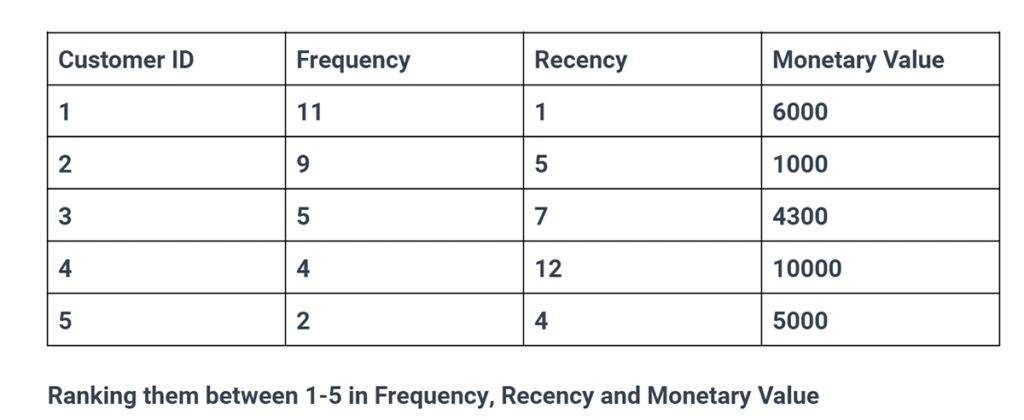
Frequency Ranking:
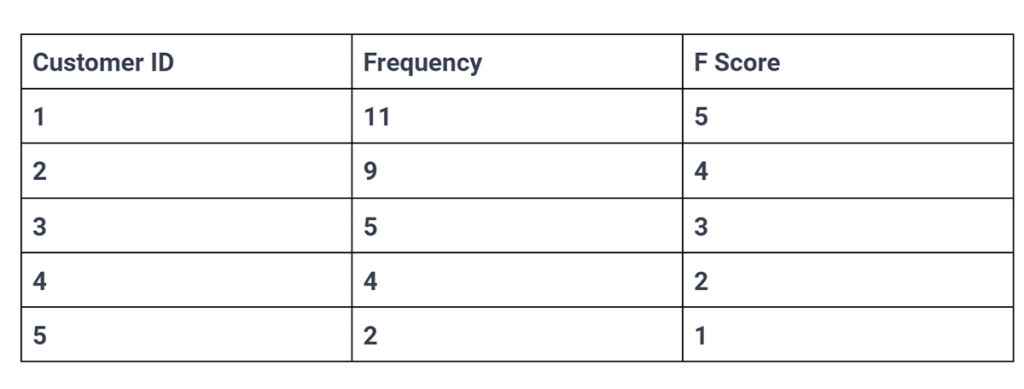
Recency Ranking:
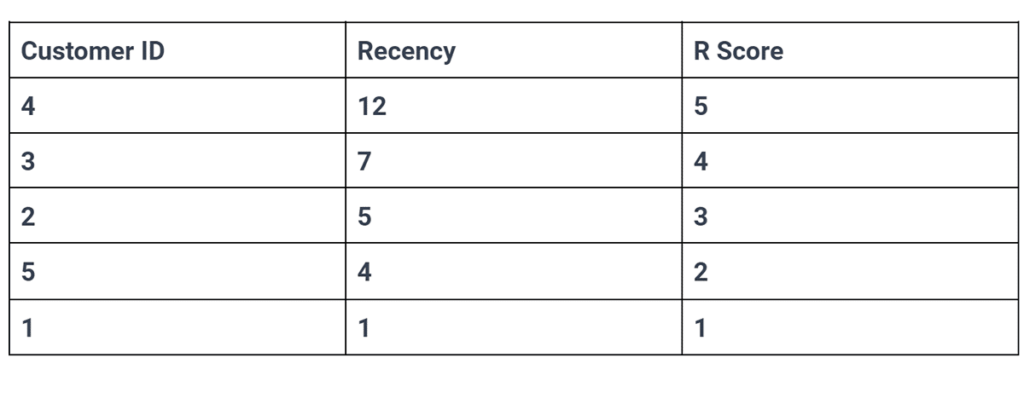
Monetary Value Ranking
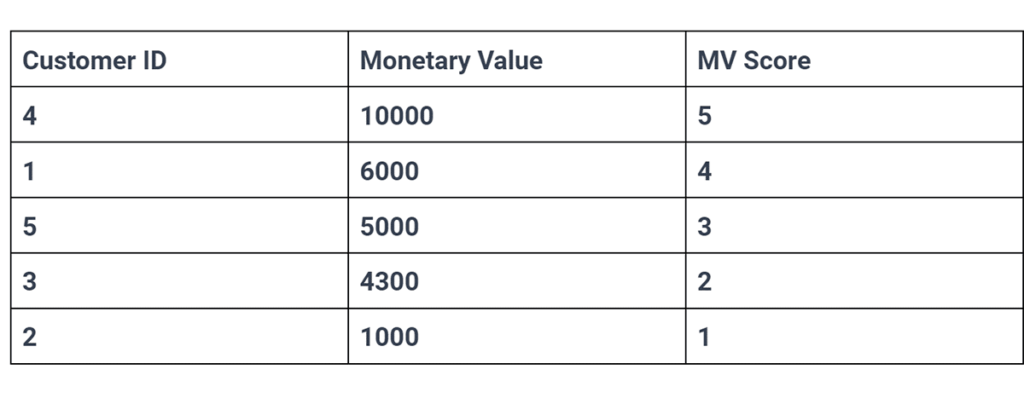
RFM Score:
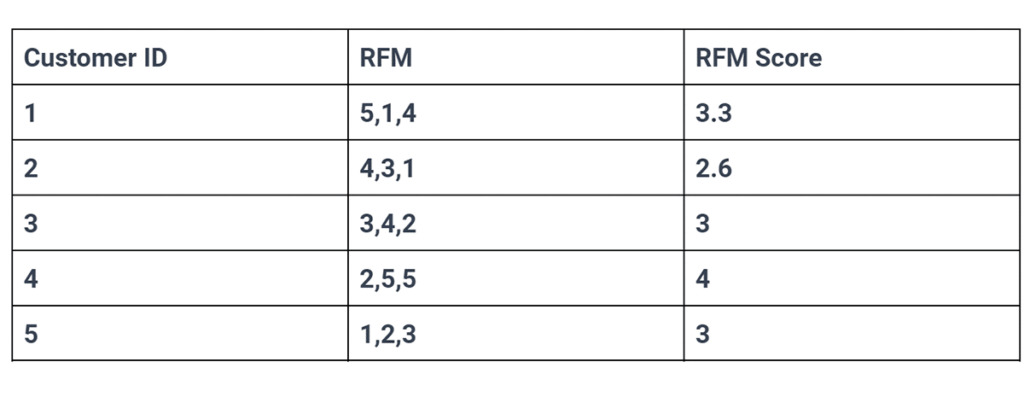
Segmentation customers based on RFM scores:
This straightforward method of ranking customers from 1-5 generates a maximum of 125 distinct RFM scores (5x5x5), ranging from 111 (lowest) to 555 (highest). Each RFM cell will have a unique size and exhibit varying customer habits, as reflected in the RFM score. Analyzing all 125 segments individually would be challenging and overwhelming for marketers! Hence we drill down to just a few segments. Some of them are listed below:
- Champions: These are your top customers who make frequent, recent, and high-value purchases. Reward them, as they could become early adopters and brand promoters.
- Potential Loyalists: These customers have recent, average-frequency, and substantial purchases. Engage them with loyalty programs or related product recommendations to convert them into Loyalists or Champions.
- New Customers: They have high overall RFM scores but shop infrequently. Strengthen your relationship with them through onboarding support and special offers, encouraging repeat visits.
- At Risk Customers: They made frequent, high-value purchases but haven’t shopped recently. Rekindle their interest with personalized reactivation campaigns, offering renewals and useful products to prompt another purchase.
- Can’t Lose Them: These customers were once regular visitors but have since disengaged. Win them back with targeted promotions and conduct surveys to uncover issues that may have driven them to competitors.
RFM serves as a data-driven customer segmentation approach, enabling marketers to make informed tactical decisions. It allows for the swift identification and grouping of users into homogenous clusters, facilitating the implementation of tailored and personalized marketing tactics. As a result, user engagement and retention are significantly enhanced.


